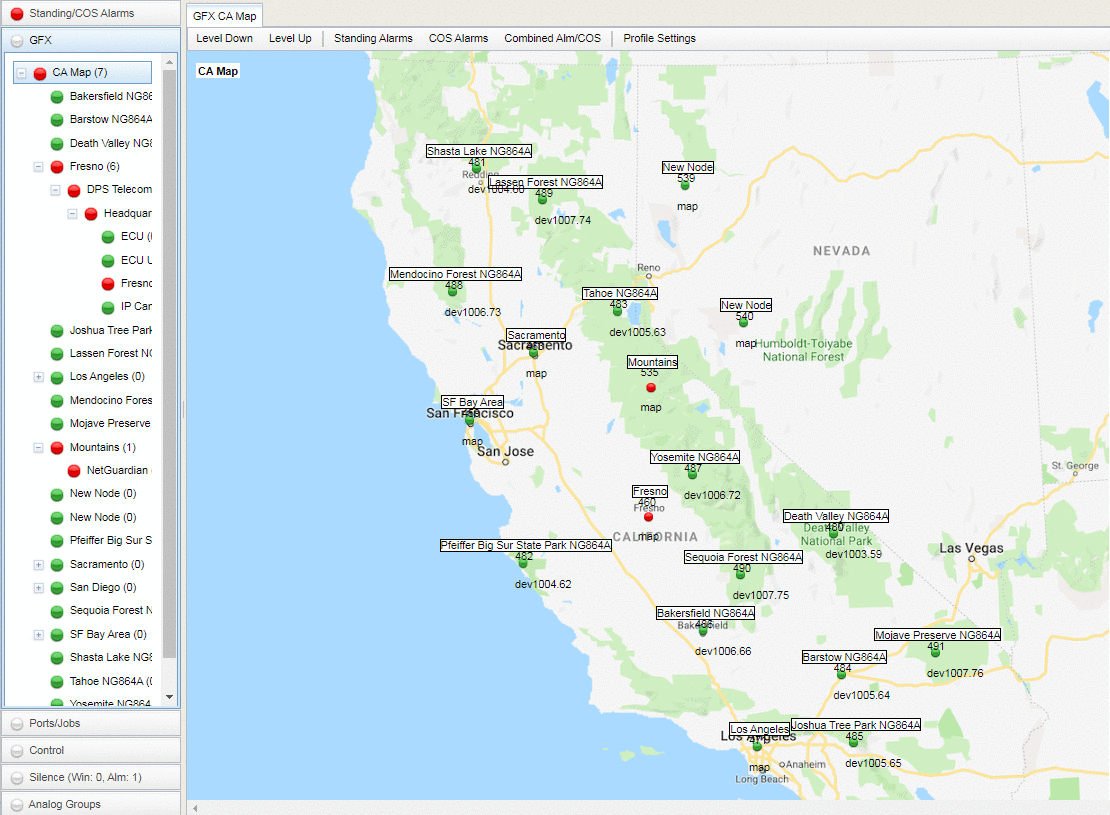Check out our White Paper Series!
A complete library of helpful advice and survival guides for every aspect of system monitoring and control.
1-800-693-0351
Have a specific question? Ask our team of expert engineers and get a specific answer!
Sign up for the next DPS Factory Training!

Whether you're new to our equipment or you've used it for years, DPS factory training is the best way to get more from your monitoring.
Reserve Your Seat TodayOne of the most common technologies found in pipelines is the use of Supervisory Control and Data Acquisition (SCADA) systems.
SCADA systems are responsible for monitoring and controlling equipment and industrial processes - usually at remote locations. SCADA systems let companies use automated tools to keep an eye on their mission-critical gear, which increases equipment and network efficiency. SCADA involves remote data collection, real-time processing, storage, alarming and reporting capabilities.

These functions are performed by three main elements: the remote terminal unit (RTU), the communication channel, and the Human-Machine Interface (HMI).
The SCADA HMI is one of the most important elements in any SCADA system. It's responsible for presenting the data collected by RTUs in an easy-to-comprehend form. Human operators will then be capable of quickly making informed decisions.
Designing the perfect SCADA system for your pipeline is critical to achieving operational goals. And, since the oil and gas industry aims to reduce pipeline accidents, your HMI device needs to have important features that should allow you to prevent and detect leaks.
Let's take a look at how a SCADA HMI can help you and your techs to assure the efficiency of your pipelines.
Your technicians probably spend hours each day watching data from dozens of pipelines stream into your network operations center (NOC). So, it's vital that your HMI is able to allow your techs to maintain situational awareness at all times.
Keep in mind that poorly designed HMI devices will interfere with a technician's ability to detect and act upon equipment alarms in a timely manner. These devices will cause your techs to respond to abnormal situations without a true understanding of the full situation.
Poorly designed HMIs commonly make it hard to operators to know what's going on because they tend to present too much data without a context - your network operators will then have to interpret the situation, which can lead to human errors.
Make sure your HMI device can present operators with the most relevant and necessary information with a high level of details - at the right time, while also filtering out nuisance alarms. Your technicians will then be able to see the alarm status in full context and in real-time, knowing how this alarm is tied to previous events and which actions must be taken to fix the situation.
Your HMI should give you an accurate visual combination of past events, current situation, and potential alarms. This all will result in a greatly improved understanding of the remote network, better analysis of alarm conditions, and faster reaction time.
In a nutshell, a competent HMI will give you many situational awareness benefits, including:
There three main capabilities that will lead to informed decisions made in a timely manner
Whether you think about it or not, we all have a sense of what an intuitive interface should look and feel. Since we constantly use our smartphones and access websites, we can recognize what is clear to understand and which actions are easy to perform, we can also recognize what is usually difficult to do.
Now, in terms of SCADA HMIs, sometimes there are so many configurations and features that these devices can become more complex than necessary. If you need HMIs, then you need them to be useful, so the best choice is to make sure your HMI offers you an intuitive display with a proven design that will deliver the best situational awareness and usability.
Choosing a poor quality and complicated alarm interface can lead to network downtime. Look for an HMI that can display alarms on an intuitive geographic map on your command center's big screen (just like a "war room"). Viewing alarms on maps makes it much easier for you and your techs to visualize what's happening with your pipelines and dispatch technicians appropriately.
In fact, a map is a helpful tool that makes it possible for you to see the layout of your pipeline network and pinpoint exact problem areas. It allows you to see valuable alarm information quickly, in an easy to understand format.
This is also very helpful for new techs that don't have a lot of experience just yet. That's because, in comparison with a text-based display, a graphical display will present information in context more immediately. When we see a picture, its meaning and implications register much more quickly than if the information must be read. Its scientifically shown that graphic displays present understandably data faster, especially if multiple types of data need to be presented.
So, make sure your HMI gives you a mapped graphic display with a physical map of all your pipeline locations. It should also offer you a multi-layer graphics that let the user zoom down to the precise location and nature of the problem.
In summary, an HMI with an intuitive display will give you the following benefits:

Additionally to having an intuitive interface, it's important that your HMI can utilize the information received from RTUs to tell them to remotely control equipment. In other words, when an alarm happens, you HMI should be able to send a command to your RTU, which will activate just about any piece of equipment through control relay outputs.
Some HMI devices don't provide these SCADA control functions. They only allow for the monitoring of a network. Technicians working with these types of equipment will have to manually respond to every single alarm. This becomes time-consuming and very inefficient, especially if you have complex processes at multiple facilities.
The best practice here is to have the capability of the derived control. Derived controls allow for immediate reactions in the case that user-specified alarm combinations happen. Imagine that two isolated alarms occurred at your pipeline infrastructure, a derived control would be activated - powering on a back-up generator for example.
The value of this feature is that it provides a way for your techs to watch for alarm combination scenarios. There would be no need to scan your monitoring screens to figure it out what's happening with your pipelines. Your HMI will know what to watch for, and it will keep track of your alarms for you.
The SCADA controls will prevent the interruption of mission-critical operations. Even when one of your network operators is unavailable to manually respond to an alarm notification.
Also, derived alarms are flexible enough to monitor and control virtually any aspect of your network - whichever it may be. The following are four examples of how you can apply derived alarm capabilities to get better situational awareness.
Getting detailed alerts from your HMI device, in many cases, is your first line of defense. You can't respond to a problem without the right information. You need substantial information to help you prevent and act upon issues in your pipelines.
So, when choosing an HMI device for your network, make sure to take the following aspects into consideration.
Long story short, with better notifications you'll get better logistic coverage of your pipelines, and consequently, you'll get economic benefits as well.
Having an efficient HMI is the key for you and your techs to effectively operate your pipelines - especially when it comes to detecting and resolving problems. Features such as intuitive interface, remote control, and detailed notifications are critical to making it easier for technicians to recognize issues and maintain an increased level of situation awareness (even while completing other tasks at the same time).
In a nutshell, a competent HMI allows technicians to efficiently operate the pipeline while also reducing the number of accidents.
As a trusted remote monitoring manufacturer, we've helped many companies to properly monitor and control their pipelines with our SCADA devices. And we can work together too, we'll achieve a higher level of visibility over your remote network. If you have any questions or simply want more information, we are here to help - don't hesitate to reach out to us.
Image courtesy Shutterstock

Morgana Siggins
Morgana Siggins is a marketing writer, content creator, and documentation specialist at DPS Telecom. She has created over 200 blog articles and videos sharing her years of experience in the remote monitoring industry.